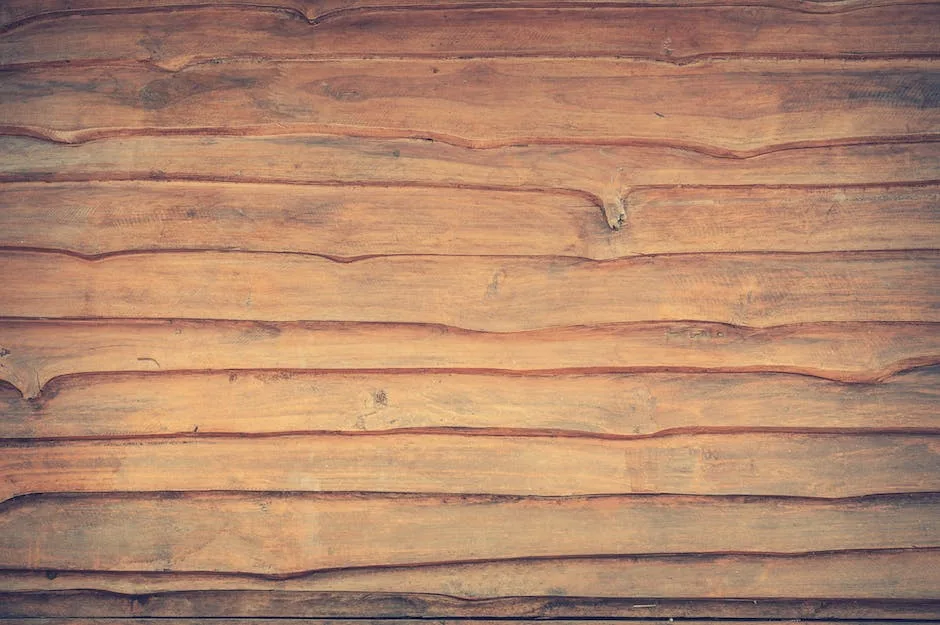The needles of a pine tree turning brown is often a sign of the tree being stressed. Many things can stress a pine tree including drought, changes in temperature, diseases, and pests. While it may be alarming to see your pine tree turning brown, there are steps you can take to help your tree.
There is no definite answer, as the cause of the browning could be due to a number of reasons. If the browning is due to a lack of water, then providing additional water may help to revive the tree. However, if the tree is suffering from a disease or pest infestation, then simply watering it will not be enough to save it and professional help may be needed.
Can a brown pine tree recover?
If water stress is caused by drought, the tree may not recover, especially if the drought conditions are severe and prolonged.
Many conifers are subject to needle drying, or winter burn, during the winter. The most common symptom of winter burn is brown or red foliage on the exposed (often south) side of the tree. Winter burn is caused by the combination of cold temperatures, wind, and low humidity, which causes the needles to dry out and turn brown.
Can pine trees turn green again
Pines and other conifers are called evergreens because they retain their needles throughout the year. However, these needles do not last forever and will eventually fall off. New needles are produced every spring and summer, and these new needles will last for two to four years.
Pine wilt and Sphaeropsis tip blight are both diseases that can cause needle discoloration and dieback in pine trees. Pine wilt is caused by a fungus that attacks the tree’s needles, turning them brown, yellow, or gray. Sphaeropsis tip blight is caused by a different fungus that also attacks the tree’s needles, turning them brown or yellow. Both diseases can also cause cankers on the tree’s stems and branches.
What does an overwatered pine tree look like?
If you see that the area around the bottom of the tree is always wet, overwatering may have occurred. Take a look at new growth around the base of the tree as a good indicator of this. If new growth withers before it’s fully grown or becomes slightly yellow or green, there is too much water present.
If you see your pine tree browning, it could be due to a number of reasons. One possibility is that the tree is not able to uptake enough water to keep its needles alive. This can often be the case when there is too much moisture and not enough drainage. Another possibility is that the tree has root rot. This is when the roots of the tree start to die, which can cause the whole tree to die from the inside out. If you are not sure what is causing the browning of your pine tree, it is best to consult with a professional.
How do you revive a brown evergreen tree?
Prune back all dead or affected areas of the tree to avoid secondary infestations and disease. Provide the tree with one deep watering per week, allowing water to reach down 12 to 15 inches. Several light waterings will encourage roots to grow near the surface (augmenting the problem), so stick to deep watering.
If you notice your tree’s leaves turning brown, prematurely falling, or changing color, you may be tempted to water it more. However, before doing this, be sure to dig down into the soil to evaluate how dry it is. If the soil is already moist, adding more water could actually kill the tree, as the roots may rot and the tree will be unable to take up the water.
How do I make my pine tree healthy again
Pine trees are an important part of the ecosystem, but they can fall victim to diseases and pests. If your pine tree is looking unhealthy, here are a few tips to help revive it:
1. Cut off any affected parts of the tree. This will help to prevent the spread of disease.
2. Water the tree more. Pine trees that are gradually browning from top to bottom may just be suffering from drought.
3. Improve drainage around the tree. This will help the roots to get the moisture they need.
4. Apply pesticides or fungicides to the tree. This will help to kill any pests or diseases that are present.
5. Get in touch with tree experts. They will be able to provide more specific advice on how to revive your pine tree.
Pine trees are coniferous evergreens that are native to the Northern Hemisphere. They are popular trees for landscaping and ornamental purposes because of their attractive needle-like leaves and conical shape. Pine trees usually live for several decades, but they can fall victim to pests and diseases that can shorten their lifespan.
Here are some signs that your pine tree isn’t feeling well:
Discolored needles: This is one of the most noticeable signs that something is wrong with your tree. If the needles are turning yellow, brown, or red, it could be a sign of stress or disease.
Needles dropping early: Needles should only be shed during the tree’s natural shedding period (usually in late winter or early spring). If you notice needles dropping at other times of the year, it could be a sign that the tree is under stress.
Spots on the pinecones: If you notice spots on the pinecones, it could be a sign of a fungal disease called pitch canker. This disease can cause the cones to drop prematurely and can eventually kill the tree.
Pealing bark: If the bark is peeling off in large chunks or seems to be brittle, it could be
Will a burnt pine tree grow back?
If a fire kills the lower branches of a pine, spruce or fir tree, the tree will not regrow these branches. A deciduous tree, on the other hand, will often resprout new branches either from where the dead branch attached to the stem or along the base of the tree.
White pine decline is caused by stress, which can come from different factors such as being planted outside of its ideal requirements. Some early symptoms of decline in white pines include yellowing or browning needles, premature needle drop, and thinning of the tree’s canopy. The bark on the branches may also appear to be shriveled or wrinkled. If you notice any of these symptoms in your white pine tree, it is important to take action to try to mitigate the stress and improve the tree’s health.
What kills pine trees
Pine wilt disease is a very serious problem for pine trees, as it can rapidly discolor and kill them. The disease is caused by tiny worms called pinewood nematodes and beetles called sawyers, which work together to create the conditions that lead to the disease. It is important to be aware of this problem so that you can take steps to prevent it from affecting your pine trees.
If you find any of the above mentioned signs, it is likely that your tree is already infested with beetles and is in the process of dying. In order to save your tree, you will need to quickly remove all the infested bark and dispose of it properly. You may also need to treat the tree with a insecticide to kill any remaining beetles.
How long can a pine tree last without water?
Christmas trees are typically cut about a week before they are brought into the home and put up. During this time, the trees may be watered a few times to keep them fresh. After the tree is cut, it can go without water for 6-8 hours. If the tree is beginning to look dry, you may want to give it a fresh cut and put it in water.
Severe water shortages during the summer can cause pine needles to bend or droop near the base. Needles then either fade and turn brown or remain green and permanently bent.
Is a brown evergreen tree dead
If you notice that the needles on your evergreen tree or shrub are browning and falling off, it could be a sign that the plant is dying. Evergreens naturally lose some needles to reduce winter snow and ice damage, but if the new growth is also brown and needle-like, it’s a cause for concern. If you have a Red Tipped photinia, rhododendron, or euonymus, be on the lookout for browning needles and new growth, as these shrubs are especially susceptible to dying.
There are two main reasons why plants can die from too much water. The first is that there simply isn’t enough soil available to soak up all of the water and keep the plant alive. The second is that the soil itself is unable to hold enough moisture, regardless of how much there is. This second reason is often due to clay soils that become compacted and don’t allow water to penetrate through them.
Can you save a dying evergreen
If you’re plant has died, don’t fret! There’s a good chance you can nurse it back to life. Start by determining what killed the plant. If it was a lack of water, then simply watering it more frequently should do the trick. If it was too much sun, then move it to a shadier spot. Once you know what killed the plant, you can take steps to correct the problem and bring your plant back to life!
Several different species of evergreen will exhibit interior needle browning during the summer months. This is a naturally occurring process. As trees grow, energy is focused on outward growth and interior needles can brown and fall away if they are no longer actively photosynthesizing.
Warp Up
Most likely, no. Once a pine tree starts turning brown, it is typically the beginning of the tree dying. There are a few things that could cause a pine tree to start turning brown, such as a disease, pests, or drought stress, andOnce a pine tree starts turning brown, it is typically the beginning of the tree dying.
It is possible to save a pine tree that is turning brown. There are several things that can be done to help the tree, including giving it more water, adding more mulch, and using a tree fertilizer. If the tree is extremely unhealthy, it may need to be removed and replaced.
I’ve always been drawn to trees.
As a kid, I spent most of my free time outside, climbing, exploring, and trying to figure out the names of the trees around me.
That early curiosity eventually led me to study arboriculture and horticulture at Michigan State.
Later, I completed a degree in forestry at the University of Michigan.
I’ve been working in tree care and education ever since.
These days, I enjoy helping people learn more about the trees in their own backyards.
How they grow, how to care for them, and why they matter.
You don’t need to be an expert to appreciate trees.
A little curiosity goes a long way.
